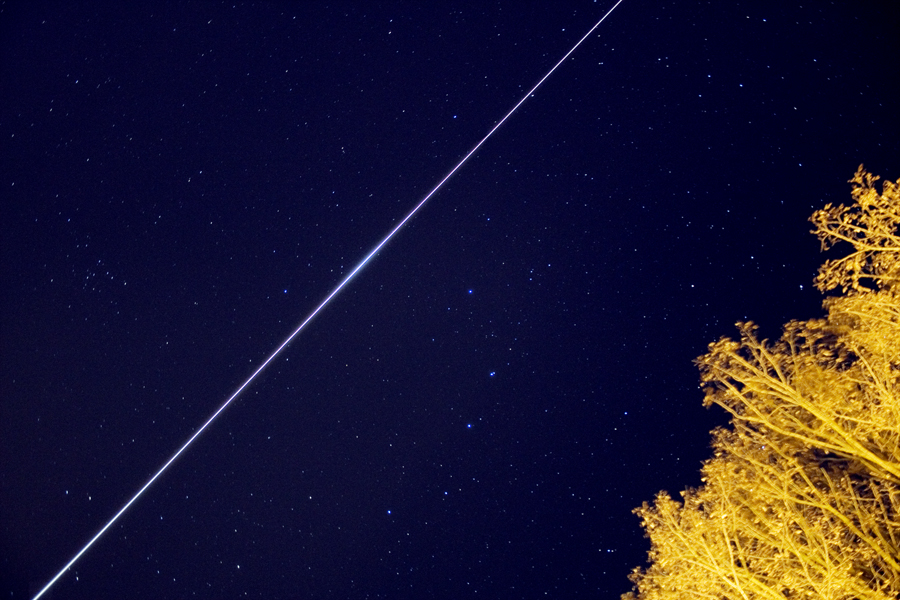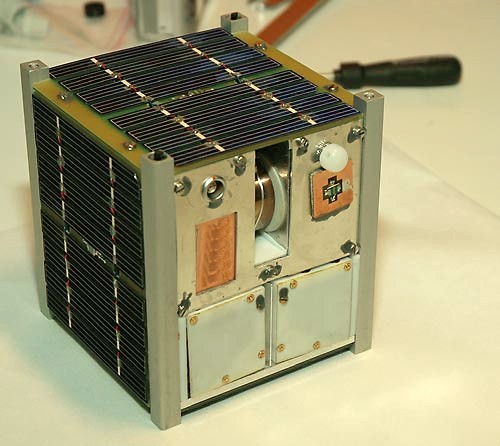|
Reflector (microsatellite)
Reflector (USA-163) is a space debris research microsatellite built in Russia by NII KP for the United States Air Force Research Lab at Kirtland AFB. There was some confusion about whether or not the USA-163 designation had actually ever been assigned, which stemmed from the fact that more than one microsatellite may fly on a given launch vehicle. A single modern launch may result in multiple maneuvering spacecraft reaching different final orbits (for example, some CubeSats, and the satellites of SpaceX's StarLink Starlink is a satellite internet constellation operated by SpaceX, providing satellite Internet access coverage to 45 countries. It also aims for global mobile phone service after 2023. SpaceX started launching Starlink satellites in 2019. As ... system). References {{spacecraft-stub Satellites orbiting Earth ... [...More Info...] [...Related Items...] OR: [Wikipedia] [Google] [Baidu] |
United States Air Force
The United States Air Force (USAF) is the air service branch of the United States Armed Forces, and is one of the eight uniformed services of the United States. Originally created on 1 August 1907, as a part of the United States Army Signal Corps, the USAF was established as a separate branch of the United States Armed Forces in 1947 with the enactment of the National Security Act of 1947. It is the second youngest branch of the United States Armed Forces and the fourth in order of precedence. The United States Air Force articulates its core missions as air supremacy, global integrated intelligence, surveillance and reconnaissance, rapid global mobility, global strike, and command and control. The United States Air Force is a military service branch organized within the Department of the Air Force, one of the three military departments of the Department of Defense. The Air Force through the Department of the Air Force is headed by the civilian Secretary of the Air Force ... [...More Info...] [...Related Items...] OR: [Wikipedia] [Google] [Baidu] |
Kirtland AFB
Kirtland Air Force Base is a United States Air Force base located in the southeast quadrant of the Albuquerque, New Mexico urban area, adjacent to the Albuquerque International Sunport. The base was named for the early Army aviator Col. Roy C. Kirtland. The military and the international airport share the same runways, making ABQ a joint civil-military airport. Kirtland AFB is the largest installation in Air Force Global Strike Command and sixth largest in the United States Air Force. The base occupies 51,558 acres and employs over 23,000 people, including more than 4,200 active duty and 1,000 Guard, plus 3,200 part-time Reserve personnel. In 2000, Kirtland AFB's economic impact on the City of Albuquerque was over $2.7 billion. Kirtland is the home of the Air Force Materiel Command's Nuclear Weapons Center (NWC). The NWC's responsibilities include acquisition, modernization and sustainment of nuclear system programs for both the Department of Defense and Department of E ... [...More Info...] [...Related Items...] OR: [Wikipedia] [Google] [Baidu] |
SeeSat-L
Satellite watching or satellite spotting is a hobby which consists of the observation and tracking of artificial satellites that are orbiting Earth. People with this hobby are variously called satellite watchers, trackers, spotters, observers, etc. Since satellites outside Earth's shadow reflect sunlight, those especially in low Earth orbit may visibly glint (or "flare") as they traverse the observer's sky, usually during twilight. History Amateur satellite spotting traces back to the days of early artificial satellites when the Smithsonian Astrophysical Observatory launched the Operation Moonwatch program in 1956 to enlist amateur astronomers in an early citizen science effort to track Soviet ''sputniks''. The program was an analog to the World War II Ground Observer Corps citizen observation program to spot enemy bombers. Moonwatch was crucial until professional stations were deployed in 1958. The program was discontinued in 1975. The people who had been involved continued ... [...More Info...] [...Related Items...] OR: [Wikipedia] [Google] [Baidu] |
Microsatellite
A microsatellite is a tract of repetitive DNA in which certain DNA motifs (ranging in length from one to six or more base pairs) are repeated, typically 5–50 times. Microsatellites occur at thousands of locations within an organism's genome. They have a higher mutation rate than other areas of DNA leading to high genetic diversity. Microsatellites are often referred to as short tandem repeats (STRs) by forensic geneticists and in genetic genealogy, or as simple sequence repeats (SSRs) by plant geneticists. Microsatellites and their longer cousins, the minisatellites, together are classified as VNTR (variable number of tandem repeats) DNA. The name "satellite" DNA refers to the early observation that centrifugation of genomic DNA in a test tube separates a prominent layer of bulk DNA from accompanying "satellite" layers of repetitive DNA. They are widely used for DNA profiling in cancer diagnosis, in kinship analysis (especially paternity testing) and in forensic identific ... [...More Info...] [...Related Items...] OR: [Wikipedia] [Google] [Baidu] |
Launch Vehicle
A launch vehicle or carrier rocket is a rocket designed to carry a payload (spacecraft or satellites) from the Earth's surface to outer space. Most launch vehicles operate from a launch pad, launch pads, supported by a missile launch control center, launch control center and systems such as vehicle assembly and fueling. Launch vehicles are engineered with advanced aerodynamics and technologies, which contribute to large operating costs. An orbital spaceflight, orbital launch vehicle must lift its payload at least to the boundary of space, approximately and accelerate it to a horizontal velocity of at least . Suborbital spaceflight, Suborbital vehicles launch their payloads to lower velocity or are launched at elevation angles greater than horizontal. Practical orbital launch vehicles are multistage rockets which use chemical propellants such as Solid-propellant rocket, solid fuel, liquid hydrogen, kerosene, liquid oxygen, or Hypergolic propellants. Launch vehicles are cla ... [...More Info...] [...Related Items...] OR: [Wikipedia] [Google] [Baidu] |
CubeSat
A CubeSat is a class of miniaturized satellite based around a form factor consisting of cubes. CubeSats have a mass of no more than per unit, and often use commercial off-the-shelf (COTS) components for their electronics and structure. CubeSats are put into orbit by deployers on the International Space Station, or launched as secondary payloads on a launch vehicle. , more than 1,600 CubeSats have been launched. In 1999, California Polytechnic State University (Cal Poly) professor Jordi Puig-Suari and Bob Twiggs, a professor at Stanford University Space Systems Development Laboratory, developed the CubeSat specifications to promote and develop the skills necessary for the design, manufacture, and testing of small satellites intended for low Earth orbit (LEO) that perform a number of scientific research functions and explore new space technologies. Academia accounted for the majority of CubeSat launches until 2013, when more than half of launches were for non-academic purposes, ... [...More Info...] [...Related Items...] OR: [Wikipedia] [Google] [Baidu] |
SpaceX
Space Exploration Technologies Corp. (SpaceX) is an American spacecraft manufacturer, launcher, and a satellite communications corporation headquartered in Hawthorne, California. It was founded in 2002 by Elon Musk with the stated goal of reducing space transportation costs to enable the colonization of Mars. The company manufactures the Falcon 9, Falcon Heavy, and Starship launch vehicles, several rocket engines, Cargo Dragon and Crew Dragon spacecraft, and Starlink communications satellites. SpaceX is developing a satellite internet constellation named Starlink to provide commercial internet service. In January 2020, the Starlink constellation became the largest satellite constellation ever launched, and as of December 2022 comprises over 3,300 small satellites in orbit. The company is also developing Starship, a privately funded, fully reusable, super heavy-lift launch system for interplanetary and orbital spaceflight. It is intended to become SpaceX's primary orbi ... [...More Info...] [...Related Items...] OR: [Wikipedia] [Google] [Baidu] |
Starlink
Starlink is a satellite internet constellation operated by SpaceX, providing satellite Internet access coverage to 45 countries. It also aims for global mobile phone service after 2023. SpaceX started launching Starlink satellites in 2019. As of December 2022, Starlink consists of over 3,300 mass-produced small satellites in low Earth orbit (LEO), which communicate with designated ground transceivers. In total, nearly 12,000 satellites are planned to be deployed, with a possible later extension to 42,000. SpaceX announced reaching more than one million subscribers in December 2022. The SpaceX satellite development facility in Redmond, Washington houses the Starlink research, development, manufacturing, and orbit control teams. The cost of the decade-long project to design, build, and deploy the constellation was estimated by SpaceX in May 2018 to be at least US$10 billion. SpaceX expects more than $30 billion in revenue by 2025 from its satellite constellation, while revenues ... [...More Info...] [...Related Items...] OR: [Wikipedia] [Google] [Baidu] |
Minisatellite
A minisatellite is a tract of repetitive DNA in which certain DNA motifs (ranging in length from 10–60 base pairs) are typically repeated 5-50 times. Minisatellites occur at more than 1,000 locations in the human genome and they are notable for their high mutation rate and high diversity in the population. Minisatellites are prominent in the centromeres and telomeres of chromosomes, the latter protecting the chromosomes from damage. The name "satellite" refers to the early observation that centrifugation of genomic DNA in a test tube separates a prominent layer of bulk DNA from accompanying "satellite" layers of repetitive DNA. Minisatellites are small sequences of DNA that do not encode proteins but appear throughout the genome hundreds of times, with many repeated copies lying next to each other. Minisatellites and their shorter cousins, the microsatellites, together are classified as VNTR (variable number of tandem repeats) DNA. Confusingly, minisatellites are often referred ... [...More Info...] [...Related Items...] OR: [Wikipedia] [Google] [Baidu] |






.jpg)